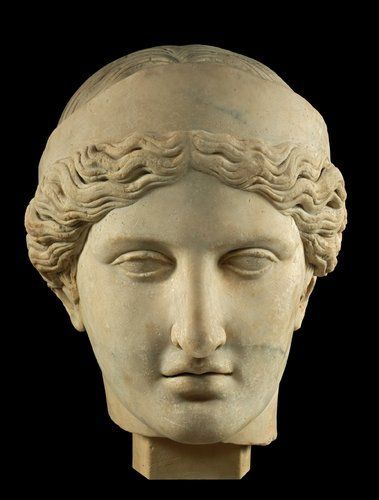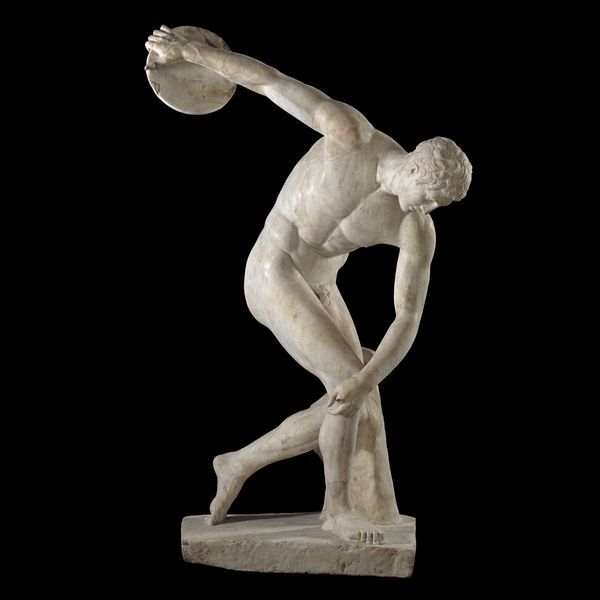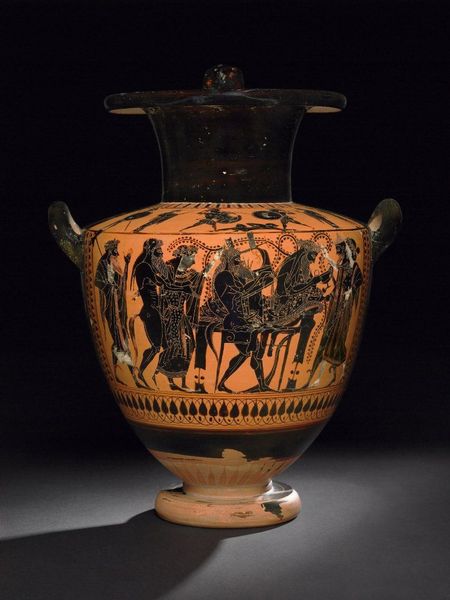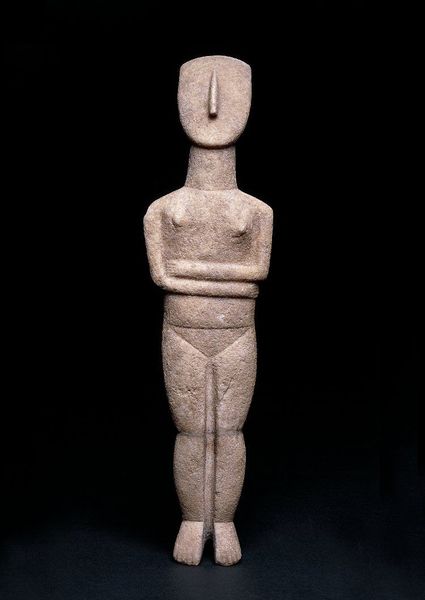Dallas Museum of Art presents masterpieces of Greek and Roman art from the British Museum
Head of marble figure of Hera. Roman period, AD 30–180, from Agrigento, Sicily, 24 13/16 x 13 x 14 3/16 in. GR 1873,0820.740 (Sculpture 504)© The Trustees of the British Museum (2013). All rights reserved.
DALLAS, TX.- The Dallas Museum of Art presents The Body Beautiful in Ancient Greece: Masterworks from the British Museum, an international touring exhibition of more than 120 objects exploring the human form through exquisite works exclusively from the British Museum’s famed collection of Greek and Roman art. The exhibition, on view May 5 through October 6, 2013, presents the Greeks’ fascination with the human body and humanity, both of which were pervasive in ancient Greek culture. Iconic marble and bronze sculptures, fine painted pottery, funerary monuments, terracottas, and gold jewelry are among the treasures that explore the human form, across three millennia of Greek civilization.
“The Body Beautiful in Ancient Greece attests to the unexampled quality of the British Museum’s holdings of Greek art, and we are grateful to its director, my friend and colleague Neil MacGregor, for the generous loan of this extraordinary exhibition,” said Maxwell L. Anderson, The Eugene McDermott Director of the Dallas Museum of Art. “In it, we will present a visually engaging and thought-provoking exploration of the human condition as seen by the ancient Greeks, and, equally, of the origins of our construct of beauty today.”
The exhibition highlights work from both ancient Greece and Rome, for Greek culture and art flourished during Roman times. Romans collected works from Greece, and when originals were not available they commissioned versions of Greek works, at times commissioning portraits of themselves that placed their features on a Hellenistic-inspired sculpture.
“The Body Beautiful in Ancient Greece: Masterworks from the British Museum celebrates the art of Greece and Rome and its impressive representations of the human body,” said Dr. Anne R. Bromberg, the DMA’s Cecil and Ida Green Curator of Ancient and Asian Art, and curator of the Dallas presentation. “A recurring subject throughout the exhibition is the male nude figure, which is one of the most striking expressions of ancient Greece, appearing as athlete, hero, god, and mortal.”
The exhibition is organized along ten different thematic sections depicting the various ways the Greeks experimented with representing the human body, from prehistoric Cycladic figures to realistic Roman genre sculptures. Masterworks from the British Museum’s collection featured in the exhibition include the Diskobolos (discus thrower) sculpture from the second century A.D.; it is on tour for the first time in the United States. A model of Ancient Olympia—one of four sites in ancient Greece where “Panhellenic” festivals were held—as it would have appeared around 100 B.C., prior to the Roman additions and alterations, is also highlighted. A video installation, original to the Dallas presentation, will be shown alongside the model, providing images of the original Olympic sites and artwork depicting ancient athletic events.
Marble statue of discus thrower (diskobolos). Roman period, second century AD, after a lost Greek original of about 450–440 BC, from the villa of the emperor Hadrian at Tivoli, Italy, 66 1/2 x 41 5/16 x 24 13/16 in. GR 1805,0703.43 (Sculpture 250) AN 396999© The Trustees of the British Museum (2013). All rights reserved.
Black-figured hydria. Attributed to the Manner of The Lysippides Painter, Attic, Archaic Greek, circa 520BC 1837,0609.35© The Trustees of the British Museum (2013). All rights reserved.
Marble figure of a woman - Spedos type. Greece, 2600BC-2400BC. 1863,0213.1© The Trustees of the British Museum (2013). All rights reserved.
Marble Sphynx, probably a support for a table, Italy, about AD120-140, 1805,0703.40© The Trustees of the British Museum (2013). All rights reserved.
Bronze figure of Jupiter holding a sceptre and a thunderbolt. Roman, 1stC-2ndC. 1865,0103.36© The Trustees of the British Museum (2013). All rights reserved.

/https%3A%2F%2Fprofilepics.canalblog.com%2Fprofilepics%2F1%2F0%2F100183.jpg)
/https%3A%2F%2Fstorage.canalblog.com%2F03%2F02%2F119589%2F96711876_o.jpg)
/https%3A%2F%2Fstorage.canalblog.com%2F11%2F31%2F119589%2F94773502_o.jpg)
/https%3A%2F%2Fstorage.canalblog.com%2F20%2F83%2F119589%2F94772815_o.jpg)
/https%3A%2F%2Fstorage.canalblog.com%2F26%2F72%2F119589%2F75604929_o.jpg)
/https%3A%2F%2Fstorage.canalblog.com%2F59%2F60%2F119589%2F26458628_o.jpg)








/http%3A%2F%2Fstorage.canalblog.com%2F33%2F20%2F119589%2F69381199_o.jpg)
/http%3A%2F%2Fstorage.canalblog.com%2F58%2F84%2F119589%2F129560262_o.jpg)
/http%3A%2F%2Fstorage.canalblog.com%2F31%2F36%2F119589%2F127772045_o.jpg)
/http%3A%2F%2Fstorage.canalblog.com%2F62%2F22%2F119589%2F122451290_o.jpg)